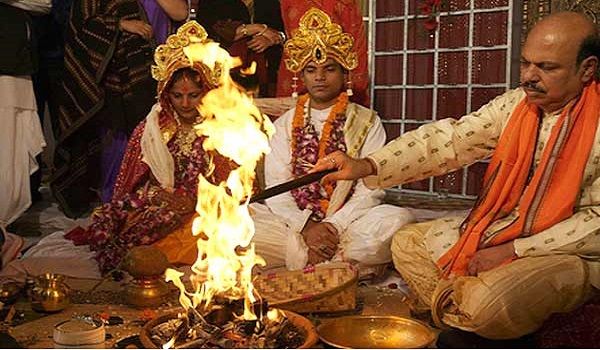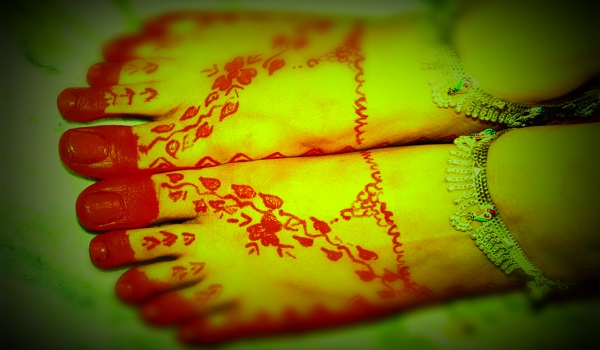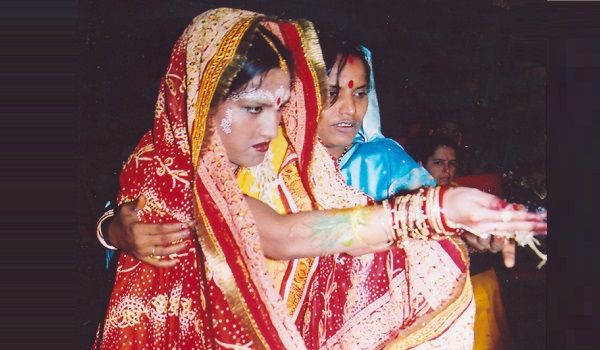
Orissa or Odisha (as it is called now) is state of great biodiversity, abundance of nature, architecturally marvelous temples and simplicity. This simplicity of Oriya people is reflected in their wedding customs as well. They are devoid of any ostentatious display of wealth and status. They place a lot of importance on traditional customs and adherence to their roots. The wedding rituals are according to Vedic Hindu rituals that have been modified with layers of regional and cultural practices. Religious devotion plays an important role in the life of Oriya people and it is reflected in their wedding customs. The Oriya word for wedding is Bahaghara, and while Brahmins have their weddings during the day time, other Oriya castes have weddings during the evenings. Let’s take a peek at the fascinating rituals of a typical Oriya wedding.
Pre-wedding Rituals
Nirbandh – Most Oriya families prefer arranged marriage for their children. Matches are searched through a matchmaker or within the community. Inter-community matches are not very encouraged among Oriya families. Once a suitable match is found, there is horoscope matching. If the horoscope matches satisfactorily, then the two families meet. After this meeting, if the families feel that all is well, they set a date for the Nirbandh, or the formal engagement ceremony. During an Oriya engagement ceremony, the bride and groom are generally not present. It is the elders of the family who meet at the bride’s home or at a temple and give each other their words or Sankalpa that they will marry their children. The ritual is also known as Vak Nischaya, or word of mouth. Both the families exchange some gifts.
Jayee Anukolo – The Jayee Anukolo ceremony marks the beginning of the wedding ceremony. Wedding cards are ordered by the families and their distribution marks the formal announcement of the wedding to the community. The first invitation card is placed before Lord Jagannath, the supreme deity for Oriya people, preferably at his main temple at Puri. This ritual is known as Deva Nimantrana. The second invitation is generally sent to the maternal uncle’s families, for both the bride’s and the groom’s sides. A member of the family visits personally and presents the invitation card with a betel leaf and betel nut. This custom is known as Moula Nimantrana. The third invitation goes from the bride’s family to the groom’s family. The bride’s father, accompanied by other male family members, visits the groom’s house with the invitation and gifts and personally invites the groom. This custom is known as Jwain Nimantrana. The families are now free to distribute the invitation cards to other relatives, friends and acquaintances.
Mangan – On the afternoon of the day before the wedding, the bride and groom undergo a ritual that is the Oriya equivalent of Haldi. Turmeric is made into a paste and the paste is applied on the bride/groom’s hands and feet by seven married women, one of which must be the sister-in-law. The bride and groom are then bathed with holy water.
Jairagodo Anukolo – This ceremony marks the lighting of a holy flame that is considered auspicious for the upcoming wedding. The fire is lit either in form of an oil or ghee lamp, or in the form of a havan. It has to be kept lit till all the wedding rituals are completed.
Diya Mangula Puja – This ritual involves offering of prayers and conducting a puja at the local temple, most commonly of the village goddess or gramadevati. The bride’s wedding saree, toe rings, bangles and a container of vermillion is offered to the Goddess and her blessings are sought. This ritual is generally done through the local barber’s wife. It is believed that the Goddess’ blessings on these objects will result in a long and happy married life.
Nandimukha – At both the bride’s and the groom’s place a ritual called Nandimukha is observed where the respective fathers pray to the ancestors to shower their blessings on the couple.
Wedding Attire
Bridegroom Attire: Traditionally, the Oriya men prefer wearing Dhoti during the wedding ceremony. These may be simple cotton ones or may be made of silk. Modest dhotis have a simple and demure border with a white base, while modern-day grooms may prefer to wear dhotis in various other colors and with more elaborate borders. Over the Dhoti the groom wears a Cotton Shirt or a kurta typically worn by men in most eastern states. He also wears some form of ethnic slippers with the outfit. He is made to wear a colorful and glittering crown made of Shola or Cork Pith.
Bridal Attire: The bride is traditionally adorned in a yellow saree with red border known as Boula Patta. However, modern-day Oriya brides prefer wearing elaborate sarees like benarasi or kanjeevaram or even local Ikkat silk sarees in red or similar colors that have some sort of ornate embroidery with zari or sequin work. She pairs the saree with an ornate brocade blouse. Another compulsory part of the Oriya bride’s wedding attire is the Dupatta or the Uttariyo. The bride covers her head with the Dupatta which is adorned with zari and sequins as well. Like the groom, the bride wears a matching headwear. She generally wears aesthetically pleasing jewelry, preferably made of gold, including necklace, earrings, bangles and rings.
Traditional Odishan saris used as part of the bridal attire are:
- Sambalpuri Saree of Sambalpur
- Khandua pata (both Silk & Cotton) of Cuttack
- Ikkat of Bargarh
- Bomkai or Sonepuri Sari (Silk & Cotton) of Subarnapur
- Matha silk or Tussar Silk of Mayurbhanj
- Brahmapuri pata of Bramhapur
- Tanta Cotton of Baleswar
- Bapta cloth (Silk & Cotton) of Koraput
Wedding Day Rituals

Image Source: Wikipedia.org
Barjaatri – The groom sets off from his home accompanied by several members of his family who are known as Barajaatri. Generally the bride’s side sends a vehicle along with a couple of male members of the family to escort the groom and the Barajaatri. The groom and the Barajaatri are met at the gate of the wedding venue by the bride’s family. A traditional arti of the groom is done by either the mother-in-law or a senior female member of the family. A tilak of vermillion paste and unbroken rice is applied on the groom’s forehead. His feet are then washed with tender coconut water and he is fed a concoction of curd, ghee, sugar and honey. He is then welcomed inside along with his companions.
Baadua Pani Gadhua – As the groom enters, the bride is informed of his arrival by the female relatives. She is then taken for a ceremonial bath that is known as Baadua Pani Gadhua.
Kanyadaan – Kanyadaan ritual marks the very first ritual of a Hindu wedding. The groom arrives at the wedding stage, shortly after which the bride is also brought in. The father of the bride then gives the bride away to the groom whereby he requests him to take good care of his daughter. He urges the groom to treat his daughter with love, respect and loyalty that lasts a lifetime. The groom accepts this responsibility and pledges his intention to do so.
Hatha Granthi Fita – The bride’s father places her right hand on that of the groom. A garland of mango leaves is placed around their joined hands. Mango leaves are revered for their symmetry and are considered holy in Hindu religious rites. The groom accepts the bride’s hands and utters his intentions of keeping her happy and loved always. This ritual is known as Hatha Granthi Fita, the Oriya variation of the Panigrahana ritual. This marks the transition of the bride from the role of a daughter to that of a wife and daughter-in-law. The ritualistic fire is lit after the Hatha Granthi ritual is completed. The couple makes seven rounds of the fire together by holding hands. These seven rounds symbolize seven sacred promises of a marriage.
Saptapadi –Seven mounds of rice are then placed on the ground, which are then sanctified by the priest. These seven mounds represent the seven hills or saptakil parwatas. These are symbolic representation of all the hardships the bride has to face during her married life. The bride decimates these mounds of rice with her right foot aided by the groom. In doing so they take seven steps together that marks the symbolic beginning of their journey together. This ritual is known as Saptapadi.

Lajahoma – The brother of the bride puts Khai or Laja, a type of pupped rice on the brides cupped hands. The groom puts his hands under the bride’s hands and together they offer the puffed rice into the sacred fire. This ritual is known as Lajahoma or Khaipoda. This offering is supposed to appease the Fire God who in turn will shower his blessing to the couple.
Sala Bidha – The brother of the bride, referred to as Sala in Oriya, punches the groom lightly on the back during the ritual of Sala Bidha. This punch is supposed to remind the groom of his duties towards the bride and that he is answerable to his brother-in-law.
Sindoor Daan–The bride and groom rise up from the wedding stage, go outside to view the Pole Star. After viewing the Polaris, the groom applies vermillion powder to the bride’s hair parting and slips on conch shell bangles on her hands. The wedding is considered to be complete after this ritual.
Post-wedding Rituals
Kaduri Khela – After the wedding rituals are over, the couple is seated in a room and made to play games to make them relax. They play with small, white, shiny shells called kaduri and the ritual is literally known as Kaduri Khela. The groom holds them in his closed fist and the bride will try to pry them open. The same is repeated with the bride holding the shells in her fist and groom trying to retrieve them.
Sasu Dahi-Pakhala Khia – After the Kaduri Khela ritual is over, the groom is invited over by his mother-in-law to have some food. According to traditions, he has to sit on the lap of his mother-in-law as she feeds him Pakhala or cooked rice soaked in water with curd along with Baigan poda (mashed grilled eggplants with spices).
Bahuna – As the bride prepares to leave her parental home, her mother sings ‘Bahuna’ songs which describes the pains that she has had to endure to give birth and bring up her daughter. Other female relatives also join her in her lament.
Gruhaprabesha – The bride reaches her husband’s home and is given a warm welcome by her mother-in-law. She is treated as the incarnate of Goddess Laxmi who is to spread joy and prosperity as represented by overturning a pot of rice placed on the threshold with her right foot.
Chauthi/Basara Raati – On the fourth day from the wedding, a puja is performed at the groom’s house where a coconut is roasted. The couple’s room is decorated with fragrant flowers and a glowing oil lamp is placed beside the bed. The couple is fed charu or the roasted coconut. The groom proceeds to the room and the bride follows him with a glass of kesara dudha or saffron infused milk. The couple spends their first night together as husband and wife. As per Oriya traditions, the marriage is considered complete only after consummation.
Asta Mangala – On the eighth day from the wedding, the bride and the groom visits the bride’s paternal home where they are generally welcomed with a grand feast. The couple spends the night together at the bride’s paternal home. This marks the end of all wedding rituals in Oriya traditions.




